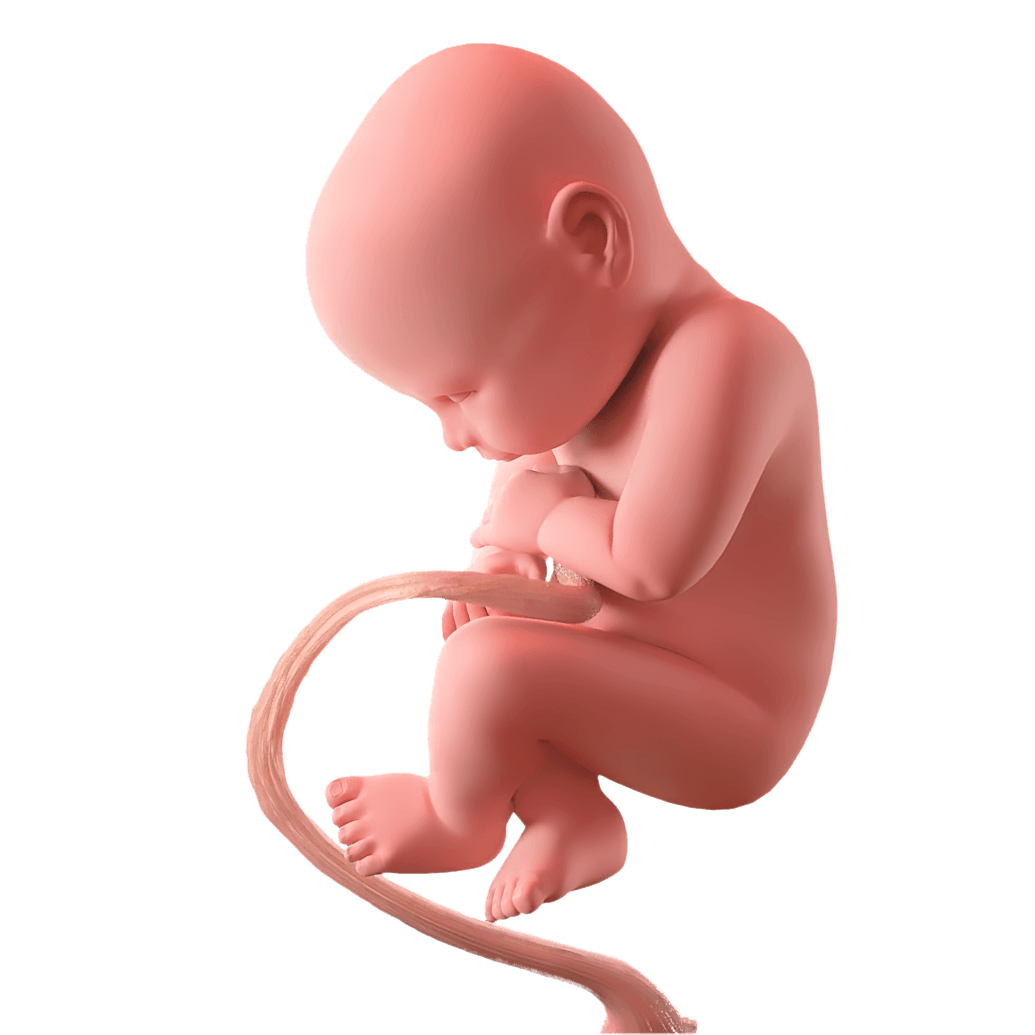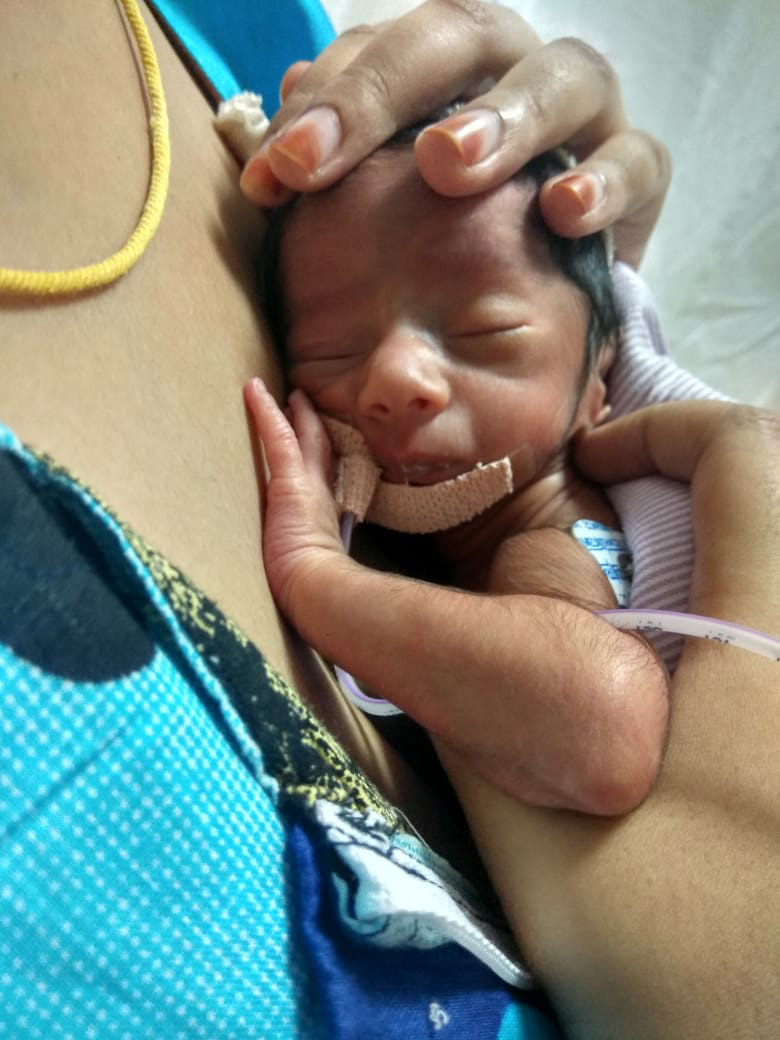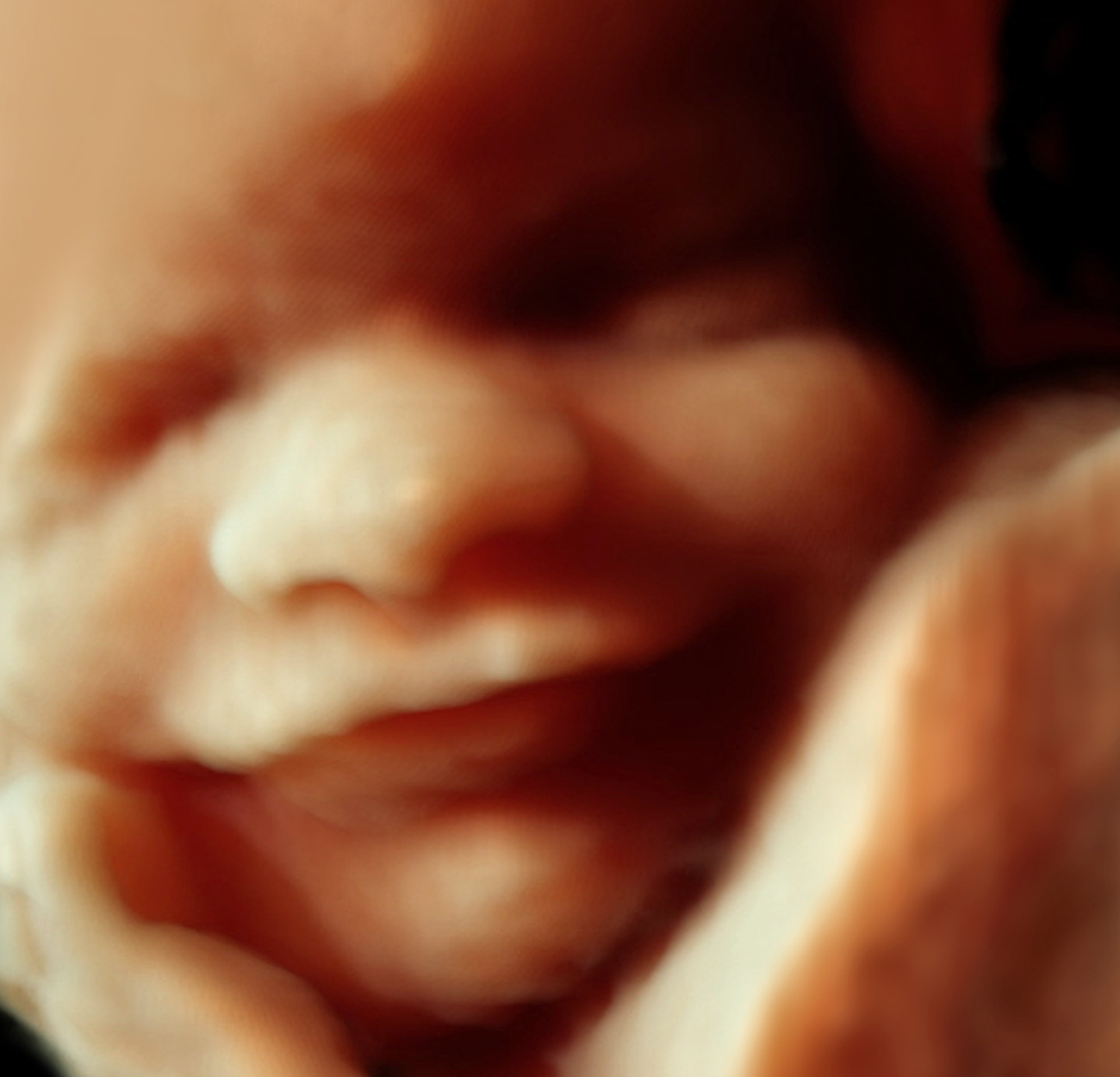Become A Defender of Life
Your donation helps us continue to provide world-class research in defense of life.
DONATECharlotte Lozier Institute
Phone: 202-223-8073
Fax: 571-312-0544
2776 S. Arlington Mill Dr.
#803
Arlington, VA 22206

Month 8
Brain growth and lung maturation
- Post-conception week 30-33
- 8 Months Pregnant
- Gestational Weeks 32-35
At 32 weeks, the fetus practices breathing almost 40% of the time.1
At 34 weeks, the fetal heart pumps about 990 quarts of blood each day.2
By 34 weeks, true alveoli start forming in the lungs. About 95% of the true alveoli develop after birth. Children keep growing true alveoli until age 8.3
Although in boys, the testicles develop around 14 weeks, they remain in the abdomen until 35 weeks. Then they descend into the scrotum.4
This month, the brain develops many bumps and grooves, called gyri and sulci.9 These bumps and grooves increase the surface area of the brain, which is important because the cortex is only on the surface of the brain. By adding gyri and sulci all over, the brain can pack in more cortical neurons than it otherwise could. This explosive brain growth is accompanied by huge advances in fetal learning capabilities.
Although the fetus is actively sensing his world for most of the pregnancy, he only starts to show measurable signs of recognition around 32 weeks gestation.10 Specifically, researchers can measure recognition in utero by examining changes in fetal heartrate. In the third trimester, the fetus usually responds to non-startling sounds with a mild deceleration in heartrate. The fetus will respond to a familiar sound with a larger heartrate deceleration than she will respond to an unfamiliar sound. When mothers read a rhyme aloud daily, it took 28-week-old fetuses about 5 weeks to become familiar with the rhyme. However, it only took 32 week gestation babies 2 weeks to become familiar with the rhyme, showing that sound recognition dramatically improves between 28 and 32 weeks.11

At birth, newborns prefer looking at faces compared to upside-down faces or other images. Scientists also wondered whether postnatal experience was important for this preference. To answer this question, one research group decided to project patterned light from outside the mother into the womb. Red lasers projected three dots into the womb – one set of dots that looked like a face, with eyes and a mouth, and another set upside-down. Amazingly, at 34 weeks, the fetuses turned their heads toward the face-like lights projected through the uterine wall, and turned less when the dots were upside-down.13 This shows that not only can the fetus see and respond to visual information from outside the womb, the fetus also prefers looking at face-like stimuli.
By this point, the fetus also grasps objects that come near her hands. In fact, as early as 27 weeks, the fetus can hold her own body weight momentarily by grasping.14








